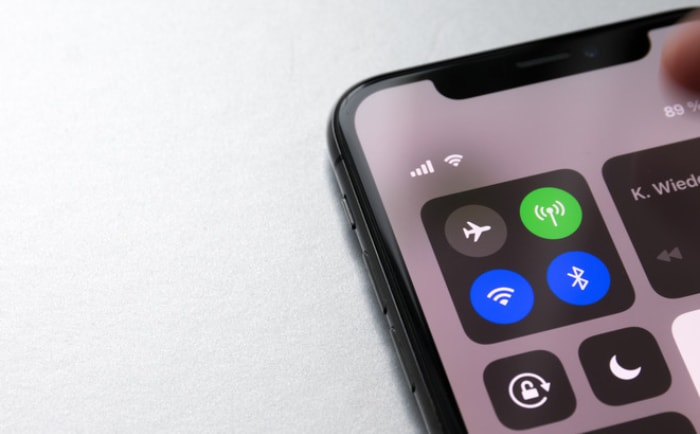PlayStation 5 vs. Xbox Series X: Which Console Wins?
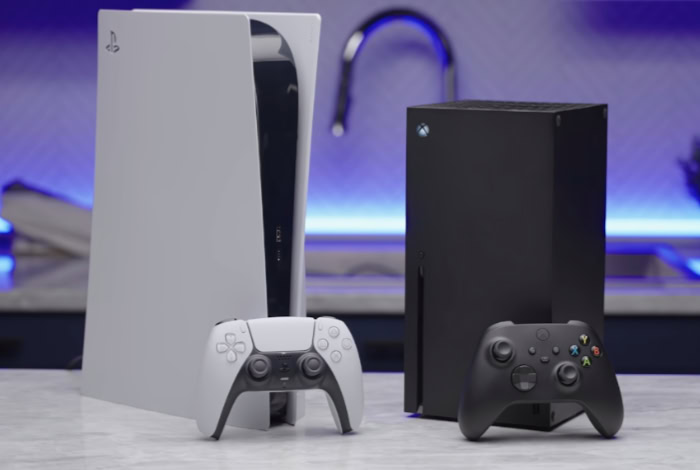
Gaming consoles have never been more powerful, yet choosing between PlayStation 5 and Xbox Series X remains one of the most debated decisions facing gamers today. Both Microsoft and Sony have packed their ninth-generation machines with cutting-edge technology, from lightning-fast SSDs to ray tracing capabilities that bring visual fidelity closer to high-end PC gaming than ever before.
But raw specs only tell part of the story. Your perfect console depends on factors beyond processing power: exclusive games that define your library, subscription services that shape your monthly budget, and ecosystem features that enhance your daily gaming experience.
Some players prioritize Sony's cinematic single-player adventures, while others gravitate toward Microsoft's Game Pass value proposition and backward compatibility depth.
Hardware and Performance
Choosing between PlayStation 5 and Xbox Series X often starts with a careful look at their technical foundations. Both consoles represent a substantial leap from their predecessors, promising impressive performance, faster load times, and graphical features that raise the bar for home gaming.
Yet, despite appearing similar on paper, each platform takes its own approach in balancing power, speed, and efficiency.
CPU and GPU Architecture and Clock Speeds
PlayStation 5 and Xbox Series X both use custom AMD Zen 2 CPUs, each with eight cores. However, Xbox Series X runs slightly ahead with a 3.8 GHz clock speed (3.6 GHz with simultaneous multithreading), while PlayStation 5 clocks in at up to 3.5 GHz with simultaneous multithreading always enabled.
For most gaming scenarios, the difference falls within a narrow margin, but Xbox potentially offers a subtle advantage for CPU-intensive games.
Examining the graphics processors, Xbox Series X features a custom RDNA 2 GPU from AMD boasting 52 compute units at 1.825 GHz, delivering approximately 12 teraflops of raw power. PlayStation 5 runs its GPU at a variable frequency up to 2.23 GHz, with 36 compute units totaling 10.3 teraflops.
Sony’s solution favors higher clock speeds over a greater number of compute units, which slightly narrows the gap in practical use. Both consoles, however, harness modern graphics features, including ray tracing, variable rate shading, and support for high frame rates.
Storage Solutions
Storage speed shapes nearly every aspect of the gaming experience, from load times to asset streaming and overall game responsiveness. Sony introduced an ultra-fast custom NVMe SSD in PlayStation 5, providing a peak read speed of around 5.5 GB/s (raw).
This allows for almost instantaneous load times in supported titles and enables innovative features, such as seamless world traversal in open-world games.
Xbox Series X counters with its proprietary SSD solution, rated at 2.4 GB/s (raw), which, while technically slower than Sony’s, still feels lightning-quick compared to previous consoles. Microsoft offers easy expansion through proprietary storage cards that slot directly into the system, delivering the same speed as the internal drive.
PlayStation 5 owners can expand storage using specific NVMe SSDs meeting strict speed requirements but may face a slightly more hands-on installation process.
Real-World Benchmarks
Looking beyond technical specifications, performance during actual gameplay matters most to players. Xbox Series X positions itself as the most powerful console on paper, frequently targeting native 4K resolution and stable 60 frames per second in many games.
Third-party titles often deliver higher resolutions or marginally smoother frame rates on Xbox, although the difference is typically modest and sometimes imperceptible during regular play.
PlayStation 5, while not always matching the top-end numbers in raw resolution, excels in delivering fast file streaming for rapid asset loading and fluid world transitions. Many PS5 exclusives, such as Ratchet & Clank: Rift Apart, showcase impressive use of the SSD for immersive environments and near-instant movement between scenes.
Ray tracing, a major graphical trend, is available on both consoles, but implementation and performance can vary based on developer optimizations and each system's strengths.
Form Factor, Thermals, and Acoustic Footprint
Physical design has a real impact on the gaming space in your living room. PlayStation 5 sports a striking, futuristic look and is considerably larger than previous PlayStations or the Xbox Series X.
Its size aids cooling, helping keep fan noise to a minimum during most sessions, though certain early units exhibited coil whine or occasional loud fan behavior, which Sony has tried to address in newer revisions.
Xbox Series X adopts a more utilitarian, monolithic tower design that fits well on shelving or inside entertainment centers. The console uses a single large fan and a vertical airflow system, resulting in impressively quiet performance, even under heavy load.
Both consoles manage heat well and rarely reach uncomfortable noise levels, focusing on maintaining reliable, unobtrusive operation during extended gaming sessions.
Game Library and Exclusives
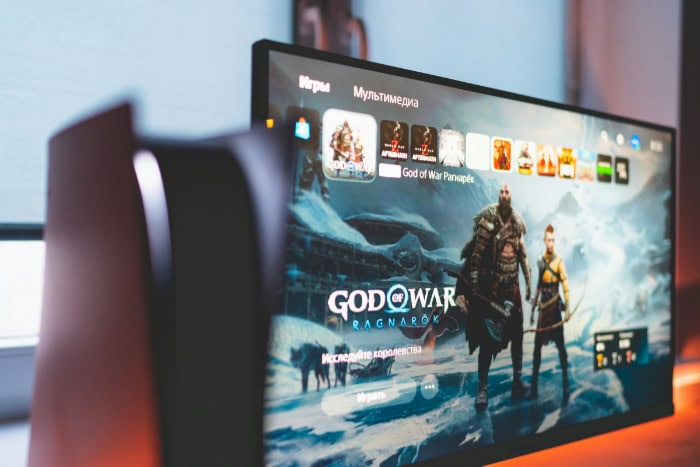
Selecting a console often comes down to the games that define it. Exclusive titles, robust third-party support, and impressive backward compatibility have all become major talking points for both PlayStation 5 and Xbox Series X.
Each platform curates a unique selection of experiences, from cinematic adventures to massive multiplayer universes, crafting reasons for players to keep coming back. Exclusive content not only builds a console’s identity but also speaks directly to players’ personal gaming tastes and priorities.
Flagship First-Party Titles Available Now
PlayStation 5 has maintained a tradition of blockbuster exclusives that highlight the platform’s technical and artistic strengths. Titles like “Marvel’s Spider-Man 2” deliver fast-paced action set in stunning, expansive recreations of New York City, making full use of the PS5 hardware and DualSense controller features.
Other hits, such as “Ratchet & Clank: Rift Apart,” showcase near-instant load times and creative visual effects only possible with the PS5’s custom SSD.
Xbox Series X pushes its own slate of exclusive experiences, many of which debut day one on Game Pass. “Starfield” stands out as an epic space RPG, offering interstellar exploration and deep role-playing systems, while “Forza Motorsport” and “Halo Infinite” deliver genre-leading racing and shooter experiences.
Although some flagship Xbox franchises have experienced development delays, each release brings with it sweeping updates, next-gen enhancements, and access through Game Pass.
Upcoming Exclusives on the Two-Year Horizon
Looking ahead, both Sony and Microsoft are investing heavily in future exclusives that further shape their consoles’ identities. PlayStation 5 fans anticipate titles like “Wolverine” and rumored new installments in the “Horizon” and “Ghost of Tsushima” franchises.
Sony’s partnership with storied studios like Naughty Dog and Insomniac Games guarantees a steady flow of high-profile, single-player adventures.
Xbox Series X is likewise expanding its arsenal, especially through major acquisitions. Huge new projects from studios like Bethesda (such as “The Elder Scrolls VI” and future “DOOM” entries) promise to draw attention, alongside fresh entries from Obsidian, Playground Games, and other Xbox Game Studios.
With Game Pass, these titles become accessible to subscribers the moment they launch, an appealing prospect for those eager to try new releases without significant added cost.
Third-Party Parity and Performance Differences
Most top-tier releases today arrive on both platforms, maintaining high standards for visuals and performance. Popular franchises like “Call of Duty,” “FIFA,” and “Assassin’s Creed” remain accessible regardless of console loyalty.
Occasionally, technical analysis reveals minor differences in resolution or performance, with Xbox Series X sometimes eking out slightly higher frame rates or native resolutions, thanks to its stronger raw specs. These differences, however, rarely impact gameplay in a way that would significantly sway most players’ choices.
PlayStation 5 occasionally secures timed exclusivity on certain high-profile third-party titles, ensuring temporary bragging rights for its user base. Xbox, meanwhile, focuses on universal availability, pushing cross-play and cross-progression to keep multiplayer communities connected.
Backward Compatibility Depth and Boost Modes
PlayStation 5 and Xbox Series X both pay attention to legacy players, but Microsoft casts the wider net. Xbox Series X boasts backward compatibility for thousands of Xbox One, Xbox 360, and select original Xbox games, many of which benefit from resolution and performance boosts through the system’s FPS Boost and Auto HDR technologies.
Digital purchases and physical discs carry forward in most cases, allowing long-time fans to keep their collections active.
PlayStation 5 offers backward compatibility primarily for PlayStation 4 titles, with most of the library playable and several benefiting from performance improvements. However, support for PlayStation 3, 2, and original PlayStation titles remains limited, with access to some classics only available via streaming services or special editions.
Game collections, both new and old, ultimately form the backbone of each platform’s appeal. Players are rewarded not only with exciting new releases but also the comfort of knowing their favorites from previous generations have a place on modern hardware.
The distinctive mix of exclusive hits, anticipated franchises, and third-party juggernauts breathes life into each console’s identity, shaping how every gamer interacts with their chosen platform.
Services and Ecosystem
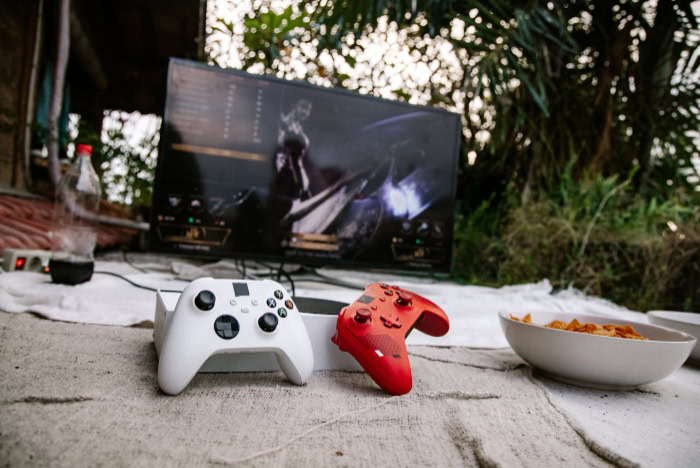
Beyond hardware and exclusive games, the broader ecosystem shapes how players engage with their console on a daily basis. Subscription services, cloud gaming, digital marketplace practices, and the flexibility to play and connect across different devices all influence the overall value a console offers.
Subscription Tiers
PlayStation Plus and Xbox Game Pass anchor each platform’s approach to delivering value and accessibility. Sony offers PlayStation Plus in three tiers: Essentials, Extra, and Premium.
Essentials provides online multiplayer, monthly downloadable games, and store discounts. Extra includes hundreds of PS4 and PS5 titles with a rotating selection of major releases, while Premium adds streaming for select classic PlayStation games, game trials, and additional cloud features.
Xbox Game Pass is available in three tiers. Game Pass Core features online console multiplayer, exclusive member deals and discounts, and a curated catalog of over 25 console games.
Standard expands access to hundreds of console games, along with multiplayer and all member benefits. Ultimate delivers the most comprehensive experience, adding hundreds of games across console, PC, and cloud, day-one access to new releases, exclusive Perks, in-game bonuses for free-to-play games, and an EA Play membership.
Game Pass stands out for its large, rotating library, consistent day-one launches, and flexible access across devices. PlayStation Plus emphasizes curated exclusives, classic titles, and benefits tailored to fans of PlayStation’s signature franchises.
Each service caters to different gaming preferences and priorities.
Cloud Gaming Availability and Performance
Cloud gaming has emerged as a powerful convenience, letting users play console games on other devices through high-speed streaming. Microsoft’s xCloud, bundled with Game Pass Ultimate, makes it possible to stream Xbox games to phones, tablets, and web browsers.
The service continues to evolve, with growing support for more titles, better controller integration, and impressive streaming performance in well-connected environments.
PlayStation’s cloud gaming options live within the PlayStation Plus Premium tier. Subscribers can stream select PS4 and PS5 games to the console or PC, providing more flexibility for players who lack storage or wish to jump into a game instantly.
Streaming quality and performance depend on individual internet connections, but Microsoft’s cloud solution boasts broader device compatibility and a somewhat larger streaming library.
Cloud play remains a work in progress for both companies, yet Microsoft’s reach and accessibility through xCloud currently offer a more seamless and device-agnostic experience for fans on the move.
Digital Storefront Policies, Refund Practices, and Regional Pricing
Buying, managing, and refunding digital content is an important aspect of the modern gaming ecosystem. Sony’s PlayStation Store and Microsoft’s Xbox Store both offer vast digital libraries and frequent sales.
Refund policies vary significantly between platforms. Microsoft offers a more flexible system, allowing users to request refunds directly, with unused or lightly-played digital purchases typically approved within a 14-day window and minimal hassle.
Sony’s approach is stricter; refunds are generally only granted if the content has not been downloaded or streamed at all, and requests must be processed through customer service chat, making the process less convenient.
Regional pricing is another point of consideration. Microsoft and Sony both adapt pricing for different regions, but fluctuations in exchange rates and local policies can cause one service to be more affordable in certain countries.
Microsoft’s subscription services, thanks to attractive local pricing strategies, may sometimes represent the better value depending on geographic location.
Cross-Play Support and Cross-Progression
Playing with friends on different platforms has become a basic expectation among gamers. Microsoft’s Xbox ecosystem supports extensive cross-play and cross-progression, driven by a unified network infrastructure that links Xbox, PC, and mobile players.
Many major games, from first-person shooters to sports titles, feature seamless online play between platforms and shared progress across devices.
Sony has become more supportive of cross-play over the past few years, opening PlayStation to more multiplayer sharing with Xbox and PC in leading titles. However, implementation may lag behind Microsoft’s approach in both breadth and consistency.
Cross-progression is available in select games but remains limited compared to the more unified syncing and account management tools within Xbox’s framework.
User Experience and Features
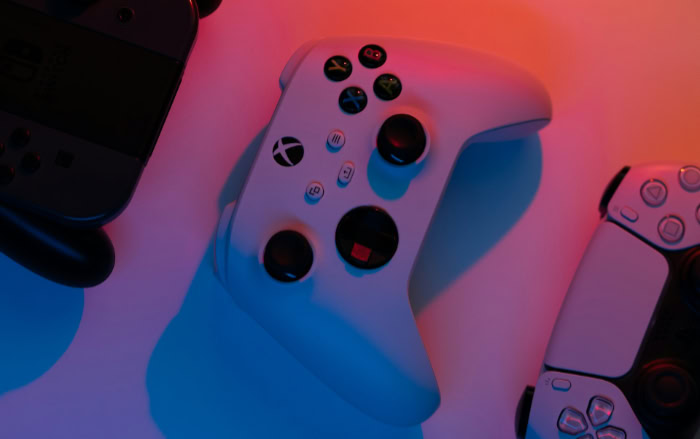
An enjoyable gaming experience depends on more than hardware power or game selection. The tactile feel of controllers, ease of navigating interfaces, robust media support, and thoughtful accessibility options shape every interaction with a console.
Both PlayStation 5 and Xbox Series X aim to make those interactions smooth, intuitive, and fun, giving each system its own unique personality in the hands of players and within the living room.
Controllers
Control is where the feel of a console truly comes to life. Sony’s DualSense controller sets itself apart with advanced haptics and adaptive triggers, translating in-game action into convincing physical sensations.
Subtle rumble effects simulate surfaces, while the triggers dynamically adjust resistance to mimic bowstrings, gun recoil, or the tension of racing pedals. Unique sound cues and a built-in microphone round out the controller for games that are designed to take full advantage of its features.
Xbox Series X sticks to the proven comfort of its ergonomic wireless controller, refining shape and grip for long play sessions with minimal fatigue. Improvements to the D-pad, textured triggers, and a dedicated share button make sharing clips and screenshots simple.
For those seeking even more customization, the Xbox Elite Series 2 controller introduces swappable components, adjustable tension, and deep profile management, appealing to competitive and enthusiast players.
Each approach highlights a different philosophy: PlayStation emphasizes immersion through sensory features, while Xbox provides flexibility and comfort that adapts to different playing styles.
User Interface Design, Quick Resume, and Activity Cards
How you interact with your games library and settings each day matters almost as much as performance. PlayStation 5 boasts a clean, visually engaging interface that places featured games, news, and friends at the forefront.
Activity Cards provide instant access to objectives, progress tracking, and even direct level jumping for supported games, reducing time spent navigating menus or searching for content. The Control Center, accessible with a single button press, delivers instant access to notifications, settings, and friends lists without forcing players to leave a game.
Xbox Series X offers a snappy and highly customizable interface organized around pinning favorite apps and games. Quick Resume stands out as a user favorite, allowing players to swap between several games almost instantly, picking up exactly where they left off.
Navigation feels efficient and familiar, especially for returning Xbox owners, and the overall experience remains smooth even with large digital libraries.
Media Capabilities
As living room entertainment devices, both consoles offer strong media features. PlayStation 5 and Xbox Series X include 4K UHD Blu-ray drives, enabling playback of physical movies in stunning detail with rich color and contrast.
Both platforms support HDR, producing deeper blacks and brighter highlights for compatible TVs, and Xbox Series X offers Dolby Vision for an extra level of visual fidelity in select content.
Streaming remains a central part of the home entertainment offering. Netflix, Disney+, YouTube, Spotify, and many other apps are available on both consoles.
Installation and switching between streaming services is fast, allowing the systems to serve as all-in-one entertainment hubs. Xbox tends to lead with broader support for advanced audio and video formats, but differences are small enough that most users rely more on library preference than on technical specifications.
Accessibility Options and Parental Controls
Inclusivity and control have become central areas of focus for both platforms. PlayStation 5 and Xbox Series X build comprehensive accessibility features into their settings.
Text-to-speech, high contrast modes, customizable subtitles, controller remapping, and support for third-party accessibility devices address a variety of player needs. Sony continues to expand its accessibility toolkit, recently introducing major updates that enable more granular customizations for individuals with limited mobility.
Xbox stands out with its Adaptive Controller, making gaming more accessible to people with disabilities. Parental controls are easy to find and set up on both platforms, empowering families to control play time, limit purchases, restrict content by age rating, and monitor online interactions.
Robust apps and browser portals help parents manage these settings from afar.
User experience is about comfort, delight, and ease, creating an environment where every gamer feels in control, immersed, and included, regardless of their background or ability level. Both companies have invested heavily in making sure those experiences keep getting better with each generation.
Cost of Ownership and Future-Proofing

Financial considerations often have just as much weight as performance or exclusives when comparing PlayStation 5 and Xbox Series X. Owning a console is not a one-time purchase.
Between the up-front cost of the hardware, storage upgrades, and ongoing subscriptions, the total investment can add up over the years.
Up-Front Hardware Price
PlayStation and Xbox both offer multiple hardware variants, addressing different budgets and preferences. The PlayStation 5 comes in two models: the standard edition with a 4K Blu-ray disc drive and a Digital Edition for those who prefer to buy and play all content online.
The disc version typically costs more, but allows flexibility with physical games, which can often be resold or shared with friends, potentially saving money in the long run.
Xbox Series X, featuring a disc drive and premium performance, stands as Microsoft’s flagship. Xbox Series S, on the other hand, targets budget-conscious players with an all-digital approach, lower up-front cost, and reduced storage space.
While Series S is less powerful than Series X, it still runs next-generation titles with impressive results, making it appealing for those willing to accept some visual compromises to save money.
Storage Expansion Costs and Ease of Installation
Modern blockbuster games demand significant storage, and both platforms ship with fast but limited SSDs. The PlayStation 5 offers an open approach to storage expansion; players can install compatible NVMe SSDs by opening the console’s cover and following a precise installation process.
Pricing for these drives has become more competitive, offering choices at various performance levels and capacities, though setup can still feel technical for some users.
Xbox Series X takes a streamlined approach with proprietary expansion cards. These cards simply plug into a port at the back of the console, expanding storage instantly while maintaining full performance.
The convenience, though, comes at a premium, as Microsoft-licensed expansion cards tend to cost more per gigabyte than many third-party SSDs available for PS5.
Both consoles support external USB drives for storing older titles or media files, but native next-generation gaming performance requires the faster, more expensive internal options.
Ongoing Subscription Expenses and Value Calculations
Subscriptions have become central to the modern console experience. PlayStation Plus and Xbox Game Pass both offer a variety of options, but monthly costs can add up quickly.
Higher tiers unlock hundreds of games, cloud streaming, and day-one access to brand-new releases. Xbox Game Pass, especially its Ultimate tier, stands out for delivering immediate access to all first-party exclusives and a large rotating catalog, creating extra value for those playing several new games each month.
PlayStation Plus offers similar value through its Extra and Premium tiers, with a slightly different mix of exclusives, trials, and classic titles. Prices for both services fluctuate by region and tier, so players may want to compare current rates and consider how often they actually utilize the included libraries.
Occasional sales or bundle deals can help offset annual costs and maximize savings for dedicated subscribers.
Conclusion
Making sense of the PlayStation 5 and Xbox Series X rivalry comes down to weighing what matters most to you as a gamer. PlayStation 5 emphasizes exclusive, cinematic single-player experiences and delivers striking innovations with its DualSense controller and ultra-fast SSD.
Xbox Series X leans into raw performance, broader backward compatibility, and the unrivaled value of Game Pass, making it ideal for those who want flexibility, diverse libraries, and seamless integration across systems.
If world-class storytelling and signature franchises are high on your list, Sony’s lineup is hard to beat, especially with iconic titles and immersive controller features. Players who prize ongoing access to a huge catalog of games, easier cross-platform play, and smart service bundles will likely find Microsoft’s approach more rewarding.
Budget, play style, and personal preferences all play a role in the final choice. Both platforms bring unique strengths, and no matter which you choose, ninth-generation consoles offer outstanding experiences for gamers of all stripes.
Take stock of your priorities, whether you care most about game exclusivity, value over time, or simple comfort, and you’ll find the console that fits naturally into your lifestyle and delivers years of entertainment.

